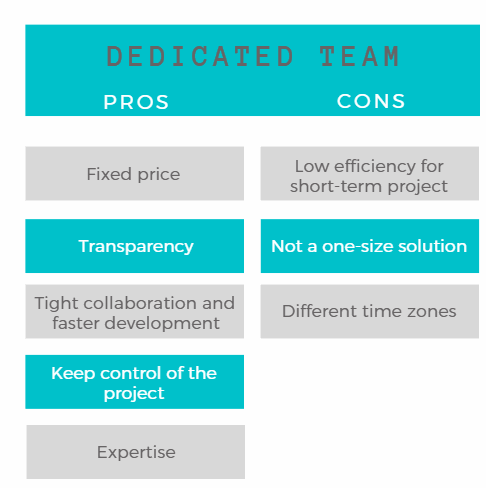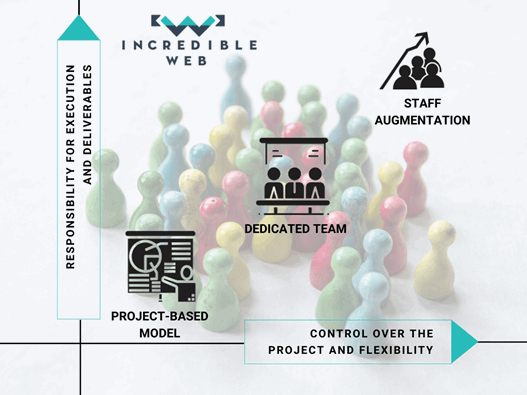Outsourcing Models
As we saw in a previous article, there are three popular outsourcing models namely Staff Augmentation, Dedicated team and Project-based model. In this article, we are going to explore these models in detail and explain how one should choose the model which complements their setup best.
Before we dig any deeper, it’s important to understand that outsourcing should first and foremost help you achieve your goals faster and better. When deciding upon the model which suits your immediate goals best, your thinking should revolve around this concept, otherwise, you risk not maximising the potential of your outsourcing exercise. The outsourcing model you chose should help you delegate as much of your product development as possible so that you can channel your energy on the core business functions. Some factors one needs to take into account include the specific software needs and requirements, costs, the knowledge and skills of your in-house team, how much control would you like to have, the duration of the project you have in mind and how can outsourcing help you focus your resources better etc.
Let’s take a closer look at each model.
Staff augmentation
Staff augmentation is a flexible outsourcing strategy that should be used to add skilled technical resources to your in-house team on a short or long-term basis. This model allows you to add specific individuals who will complement your existing team and the requirements of the project. Moreover, you get to keep control of the project, and you manage your team however you deem is best for your business.
The obvious benefits of this model include:
- less investment in infrastructure
- no recruitment costs
- no location boundary
- less overhead costs
Adding a temporary expert to your in-house team is aimed at compensating for the lack of skills and knowledge required temporarily as well as bring a valued contribution to your company.

DEDICATED TEAM
In a dedicated team model, an onsite or remote team provided by your outsourcing agency exclusively dedicated to your project. The team may still be considered as an extension to your in-house team. The outsourced team would communicate on a daily basis with your team, explaining the activities and overall progress of the project. The client keeps full control over the management of the project and teams. On the other hand, the dedicated team has to provide tangible results based on the requirements and goals agreed upon.
This model is usually used for long term projects because the scope of the project is not strictly defined and can change frequently. It’s better suited for projects that require constant evolution of the requirements and revision of tasks depending on the market performance or the evolution of the technology. It’s a perfect model for startups who want to focus on delivering the product instead of focusing on the recruitment and training involved in building a software development team.

Project-based model
With a project-based outsourcing model, you delegate the entire management and development of the project to your trusted outsourcing agency. The outsourcing company acts as a partner to the client. All you need to do is make sure that your requirements and specifications are well documented and communicated. Then you discuss a planned strategy of how the deliverables will be tested and approved. In this model, you delegate the development of the project completely to your outsourcing partner, from beginning to end. This allows you to focus entirely on your business and prepare ahead for when the project is delivered. However, with this setup, one must keep in mind that you lose some of the control at the same time. It is imperative that you devise a communication plan with your outsourcing partner and follow up on the progress as need be.
Companies typically use this outsourcing strategy to channel all their focus to their main operations whilst the outsourced team handles the software development. This model is a good solution if you have a clearly defined project scope.
Another advantage of this model is that by cooperating with a company that is an expert in the field, you will ultimately get valuable feedback and contributions to the project, increase the value and quality of your final product. You can also benefit from having no limits or boundaries whilst still able to access a wide range of skilled workers that can satisfy your business needs.
In the graph below, we compare how much control, responsibility and flexibility you want to maintain with each model.

I hope this has clarified the common question we are normally faced with by our clients. If you need a consultation on your project or company, please don't hesitate to contact us.

